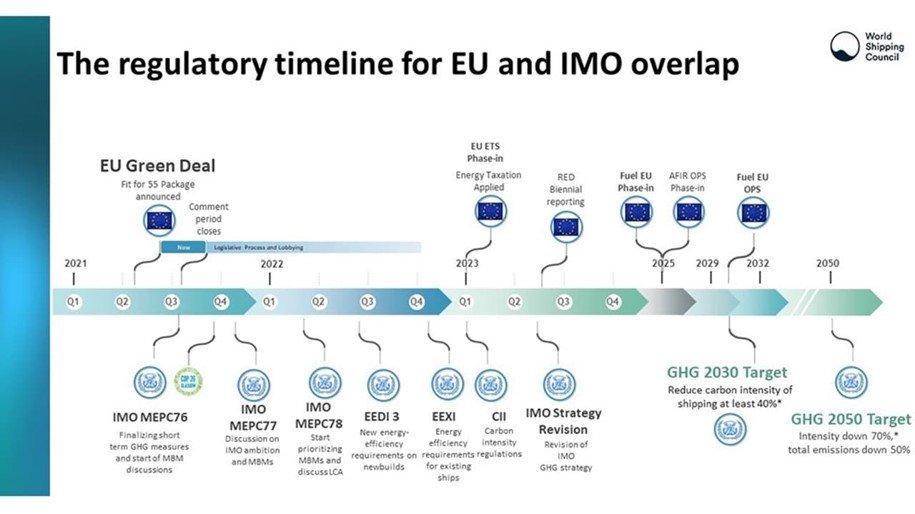Overview of CO2 Rules and Regulations for Maritime Industry 2022
There are the 5 most important ones: CII - Fuel EU - EU ETS - EEDI - EEXI
Summary - Almost all rules and regulations apply to large ships of 5.000 gross tonnage or more and will only start to significantly impact your OPEX as per 2026. While some vessels remain exempt, it is to be expected all vessels will be subjected to severe carbon reduction requirements that will significantly impact operations and easily double operational costs of measures are not taken in time. Most impactful on your future operations will be Fuel EU from 2026 onwards.
This blog is written in 2022. For updates and an overview of all rules, check out the rules and regulations section.
This blog briefly highlights key takeaways for CII, FuelEU, EU ETS, EEDI and EEXI. More details on each can be find at the end. Ask the chatbox for guidance on your vessel.
CII
Start 1 January 2023 for all cargo, RoPax and cruise vessels above 5,000 GT and international trade.
5% CO2 reduction 2023 - 40% CO2 reduction 2030 - 70% CO2 reduction 2050.
Cost impact before 2026 limited, cost impact after 2026 can become significant.
IMO mandated regulation, enforced by class.
Fuel EU
One of the most stringent upcoming rules and regulations affecting your vessel.
Start 1 January 2026 for vessels above 5,000 GT in EU, potentially above 400 GT.
Fuel EU will adhere to well-to-wake emissions and could mean “the death of LNG” with heavy fines for non-compliant vessels.
Much remains unclear and many details are still to be determined by the European Commission.
EU ETS
Start 1 January 2023 for vessels above 5,000 GT.
Yearly reporting and surrendering of allowances required via EU MRV.
Shipowner must ‘surrender’ allowances to cover their emissions.
Money can be made by trading these allowances.
EEDI
The Energy Efficiency Design Index (EEDI) only affects newbuilds and has limited cost impact.
The EEDI mandates a CO2 reduction level for newbuilds in 2025 of 30% with respect to a 2000 - 2010 average.
CO2 reduction level will be tightened every five years to keep up with innovations and new techniques.
EEXI
The EEXI is a one-time certification targeting design parameters for existing vessels.
Applicable to the following classes above 400 GT: bulk carrier, gas carrier, tanker, containership, cargo vessels, Ro-ro, LNG carrier, cruise vessel.
Ships have to approve the attained EEXI value by the first periodical survey in 2023.









The Carbon Intensity Indicator (CII) is a rating to determine carbon intensity of your vessel by IMO. It is part of SEEMP III and mandates a reduction of 11% by 2026 and 70% by 2050. Learn more about CII and how it affects your vessel’s operations here.